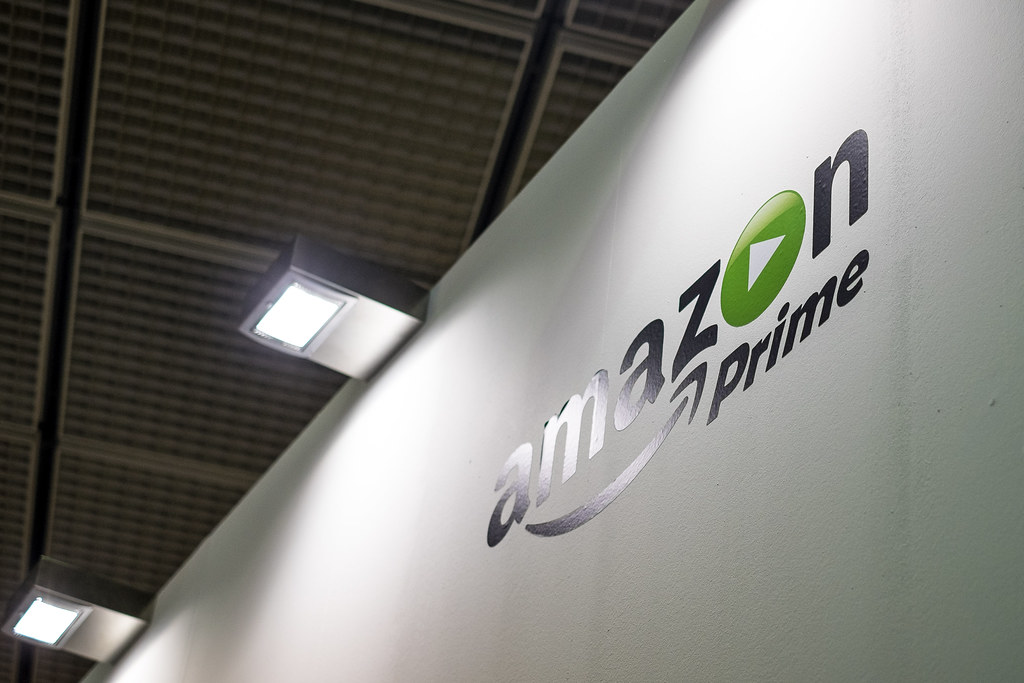
A federal courtroom in Seattle is currently the stage for a significant legal battle involving Amazon, the global e-commerce giant, and the Federal Trade Commission (FTC). This trial, which commenced with jury selection on a Monday and was slated for opening statements on a Tuesday, centers on serious allegations that Amazon employed deceptive practices to enroll millions of customers in its lucrative Prime subscription service and subsequently made it unduly difficult for them to cancel. The outcome, to be determined by a jury over an anticipated month-long trial, holds substantial implications for consumer protection in the digital age and the operational strategies of large online platforms, particularly those relying heavily on subscription models.
At the heart of the FTC’s lawsuit, initially filed two years ago under the Biden administration, are claims that Amazon engaged in a “years-long effort” to trick millions of customers into automatically renewing Prime subscriptions. The agency specifically highlights the widespread use of “manipulative, coercive, or deceptive” user-interface designs, now commonly referred to as “dark patterns.” These design elements, according to the FTC, were engineered to steer consumers into making decisions they might not have otherwise made, thereby undermining their informed consent in online transactions. This particular focus underscores a growing regulatory concern over how digital interfaces are designed to influence user behavior.
Amazon, for its part, vehemently denies any wrongdoing in its Prime enrollment and cancellation processes. The company asserts that it clearly explains Prime’s terms before charging customers and provides simple, accessible cancellation methods, including options by phone, online, and via online chat. An Amazon spokesperson firmly stated, “The bottom line is that neither Amazon nor the individual defendants did anything wrong — we remain confident that the facts will show these executives acted properly and we always put customers first.” The company maintains that Prime’s widespread popularity, boasting hundreds of millions of members and high renewal rates, is a testament to its inherent value and utility, rather than a result of deceptive practices.
1. **The Genesis of the FTC’s Case Against Amazon Prime**
The legal challenge confronting Amazon regarding its Prime subscription practices can be traced back to an investigation initiated by the Federal Trade Commission in 2021. This initial inquiry commenced during the first Trump administration, indicating that concerns regarding the transparency of online subscription services spanned across political administrations. However, the formal lawsuit was not officially filed until 2023, under the leadership of FTC Chair Lina Khan, an antitrust expert appointed by President Joe Biden, marking a significant escalation in regulatory oversight.
The FTC’s comprehensive complaint, submitted to the U.S. District Court in Seattle, alleges more than a decade of persistent legal violations by Amazon. Central to these allegations is a claimed systematic pattern of behavior that purportedly misled consumers into signing up for Prime and subsequently erected barriers that made it difficult for them to cancel. The agency’s concentrated focus on the Prime service underscores the increasing scrutiny governmental bodies are placing on the design and operational ethics of digital subscription models, which have become deeply embedded in contemporary daily life.
Significantly, this lawsuit preceded another sweeping antitrust suit filed by the FTC against Amazon, which accuses the company of exercising monopolistic control over online markets. While these two cases are distinct in their specific legal claims, both collectively underscore a broader, concerted regulatory effort to address the immense market power and consumer-facing practices of dominant technology firms. The Prime case, though specifically targeting consumer protection laws, therefore serves as an important precursor and indicator of the wider antitrust discussions surrounding Amazon’s expansive influence.
2. **Central Allegation: Deceptive Enrollment Tactics and “Dark Patterns”**
A core accusation emanating from the Federal Trade Commission in its lawsuit against Amazon is that the company intentionally tricked customers into subscribing to its Prime service through the widespread use of deceptive user-interface designs, often referred to as “dark patterns.” These manipulative design elements, as explicitly described in the legal complaint, are purportedly engineered to “trick users into making decisions they would not otherwise have made.” The FTC alleges that Amazon systematically exploited these sophisticated design techniques specifically to boost Prime enrollment figures, often at the expense of clear consumer consent.
Regulators have cited several specific examples to illustrate these alleged deceptive tactics. One particularly notable illustration presented in the lawsuit involved a prominent large yellow button on Amazon’s website that prominently stated, “Get FREE Two-Day Shipping.” According to the FTC, this button provided a seemingly swift and appealing pathway for users to sign up for Prime without clearly and conspicuously detailing the recurring membership costs inherently associated with the subscription. In stark contrast, avoiding Prime enrollment required users to actively locate and click a much smaller, less prominent blue hyperlink labeled “No thanks, I do not want fast, free shipping,” creating an obvious imbalance in user choice presentation.
The agency further claimed that, in numerous instances, consumers were presented with a button intended to complete their purchase transaction that did not clearly and explicitly indicate that clicking it would also enroll them in the Prime service. This critical lack of transparent disclosure at the crucial point of transaction, the FTC argues, directly led millions of consumers to “accidentally enrolled in Prime without knowledge or consent,” thereby effectively taking their money for a subscription they did not knowingly agree to.

3. **The Labyrinthine “Iliad” Cancellation Process**
Beyond the grave allegations of deceptive enrollment tactics, the Federal Trade Commission also vehemently contends that Amazon deliberately made it excessively and unduly difficult for customers to cancel their Prime memberships once they had subscribed. The FTC vividly describes Amazon’s cancellation process as “labyrinthine,” accusing the company of intentionally creating a multi-step, convoluted mechanism specifically designed to deter or effectively distract consumers from successfully completing their cancellation requests, thereby retaining unwilling subscribers.
Internally, Amazon employees reportedly referred to this intricate and arduous cancellation flow by the evocative name “Iliad” or “Iliad Flow.” This particular name, a direct reference to Homer’s epic ancient Greek poem chronicling the lengthy and arduous Trojan War, was used to aptly describe a process that, according to the FTC’s claims, required customers to navigate through a daunting “four-page, six-click, fifteen-option cancellation process.” This exceptionally complex journey was allegedly replete with various strategically placed “off-ramps,” including persuasive warnings about losing benefits, enticing promotional discounts, and other offers, all deliberately intended to dissuade the customer from finalizing their legitimate cancellation request.
The FTC’s complaint specifically highlighted that, aside from the option of contacting customer service directly, Amazon ostensibly provided no simpler or more straightforward alternative for consumers wishing to terminate their Prime membership. The agency further alleged that Amazon leadership had intentionally slowed or actively rejected changes that would have significantly streamlined the cancellation process, driven by an internal concern that increased clarity and ease of exit would inevitably lead to a noticeable drop in subscribers. This implies a deliberate corporate strategy to retain members, even those who actively and intentionally sought to leave the service.

4. **The Restore Online Shoppers’ Confidence Act (ROSCA) at the Core of the Lawsuit**
A central and critical pillar of the Federal Trade Commission’s case against Amazon is the alleged violation of the Restore Online Shoppers’ Confidence Act (ROSCA). Enacted in 2010, this significant federal law was specifically designed with the primary objective of protecting consumers by ensuring that individuals are fully and explicitly aware of precisely what they are being charged for when making online purchases, particularly concerning automatically renewing subscription services. The FTC’s lawsuit emphatically claims that Amazon’s practices regarding both Prime enrollment and cancellation directly contravene the clear mandates and spirit of ROSCA.
U.S. District Judge John Chun, who is presiding over the ongoing trial, issued a pivotal order affirming that ROSCA is indeed applicable to Amazon Prime. This ruling holds substantial significance as it firmly establishes the definitive legal framework under which Amazon’s actions will be meticulously judged, emphatically underscoring the necessity for “clear and conspicuous” disclosures of material terms and “simple” cancellation methods, as unequivocally stipulated by the act. The application of ROSCA by the court clearly reinforces the legislative intent to actively curb deceptive practices prevalent in various forms of online commerce.
Furthermore, Judge Chun notably sided with the FTC on its specific claim that Amazon violated ROSCA by collecting customers’ billing information *before* adequately disclosing Prime’s terms. This procedural ruling represents a notable blow to some of Amazon’s potential legal defenses and robustly reinforces the FTC’s argument that Amazon failed to meet its fundamental obligations under this crucial consumer protection law. The jury will now be specifically tasked with the critical decision of determining whether Amazon’s disclosures and, particularly, the intricate “Iliad” cancellation method, truly meet the stringent “clear and conspicuous” and “simple” requirements as prescribed by ROSCA.
5. **Amazon Prime’s Pivotal Role and Financial Contributions**
Amazon Prime transcends being merely a supplementary service; it stands as a foundational and indispensable component of Amazon’s expansive e-commerce ecosystem and serves as a highly significant driver of its overall financial success. Launched with considerable foresight in 2005, the program has since expanded into one of the world’s largest and most successful subscription services, proudly boasting over 200 million members globally, a membership figure that was last publicly disclosed in 2021. For an annual fee of $139 or a flexible monthly fee of $14.99, subscribers gain access to an impressive suite of benefits, notably including faster shipping options, extensive video streaming via Prime Video, and exclusive discounts at Whole Foods, which Amazon proudly owns.
The direct financial contributions generated by Prime are truly substantial, unequivocally illustrating its absolutely critical role within Amazon’s core business model. In its latest quarterly report, Amazon unveiled that it had achieved more than $12 billion in net revenue specifically from subscription services, representing a robust 12% increase from the corresponding period in the prior year. This impressive figure comprehensively encompasses not only the direct Prime membership fees but also includes revenue derived from other complementary subscription platforms such as its music and e-books services. More broadly, subscriptions, with Prime being the dominant contributor, collectively generated an astonishing figure of over $44 billion for Amazon in the preceding year, unequivocally underscoring its immense revenue-generating capacity.
Beyond the direct subscription fees, Prime’s profound value to Amazon extensively extends to its significant influence on fundamental customer behavior and purchasing patterns. Data consistently and conclusively demonstrates that Prime members are, without question, Amazon’s most valuable and engaged customers, spending substantially more money and shopping with considerably greater frequency than their non-Prime counterparts. Industry analysts conservatively estimate that Prime members spend approximately twice as much on Amazon compared to non-Prime customers, powerfully highlighting how the subscription service actively feeds into and powerfully reinforces core shopping habits, thereby making it an indispensable “pillar” of the company’s retail business, a term famously used by Amazon founder Jeff Bezos himself.
6. **Amazon’s Counter-Arguments: Transparency and Customer Satisfaction**
In its robust defense against the Federal Trade Commission’s serious allegations, Amazon has consistently and firmly maintained that both its Prime sign-up and subsequent cancellation processes are, in fact, inherently “clear and simple.” The company adamantly argues that it has “always been transparent about Prime’s terms,” thereby ensuring that its vast customer base is fully and comprehensively informed before making any commitment to the subscription. This steadfast stance directly challenges the FTC’s claims of deceptive enrollment tactics and overly convoluted cancellation procedures, positioning Amazon as a fundamentally customer-centric entity that prioritizes clarity and consent.
Amazon strategically points to the overwhelming popularity and consistently high satisfaction rates associated with its Prime program as compelling evidence that customers willingly and enthusiastically subscribe, finding genuine value in the extensive benefits offered. In a detailed trial brief, the company explicitly stated, “Occasional customer frustrations and mistakes are inevitable — especially for a program as popular as Amazon Prime.” It further contended that “Evidence that a small percentage of customers misunderstood Prime enrollment or cancellation does not prove that Amazon violated the law,” suggesting that any reported customer issues are isolated and minor incidents rather than indicative of systemic misconduct or intentional deception.
The e-commerce giant also asserted that its fundamental approach to driving Prime subscriptions is by genuinely making the service inherently “useful and valuable,” which, it argues, organically explains its tremendous success in both member acquisition and long-term retention. An Amazon spokesperson emphatically reiterated, “We remain confident that the facts will show these executives acted properly and we always put customers first.” The company’s core defense thus hinges on the argument that Prime’s immense and undeniable appeal is organically driven by its superior offerings and perceived benefits, rather than through manipulative design or calculated obfuscation.

7. **Internal Awareness: “Unspoken Cancer” and Leadership Decisions**
A particularly critical and highly scrutinizing aspect of the Federal Trade Commission’s case against Amazon deeply revolves around the company’s alleged internal awareness of the pervasive issues surrounding Prime enrollment and cancellation processes. The FTC’s comprehensive trial brief introduced what it deemed compelling evidence, including various internal employee communications, strongly suggesting that Amazon was not only acutely aware of significant customer struggles but, more controversially, actively resisted implementing changes that would simplify these processes. This narrative directly contrasts with Amazon’s public defense, which emphasizes transparency and a customer-first operational philosophy.
According to the FTC’s detailed allegations, Amazon has “long known that millions of its customers struggled with enrollment and cancellation of its subscription service, Prime.” Disturbingly, employees internally described this widely recognized problem as an “unspoken cancer,” a term that vividly highlights a perceived systemic issue deeply embedded within the company’s operational structure and culture. The agency specifically alleges that Amazon “refused to fix this known problem” because, crucially, “clarity adjustments would lead to a drop in subscribers,” thereby strongly implying a deliberate corporate decision to prioritize maintaining subscriber numbers over ensuring clear consumer consent and providing an easy, straightforward exit option.
The complaint further explicitly stated that Amazon leadership demonstrably “slowed or rejected changes that would have made canceling easier.” This internal resistance to streamlining the notoriously complex “Iliad” cancellation process, despite clear internal recognition of widespread customer frustration and difficulty, forms a key and central part of the FTC’s overarching argument that Amazon’s actions were intentional and strategically designed to maintain subscriptions against the explicit wishes of customers. These highly scrutinized internal documents aim to provide concrete evidence demonstrating that the company prioritized its immediate financial bottom line over adequately addressing acknowledged and documented consumer harm.
8. **Amazon’s Defense: Industry Standards and “Dark Patterns” Ambiguity**
Amazon’s robust defense against the Federal Trade Commission’s allegations centers significantly on the assertion that its Prime enrollment and cancellation processes align with, or even surpass, prevailing industry standards. The company contends that its design choices, which the FTC labels “dark patterns,” are common practices across the subscription economy, familiar to consumers who routinely navigate similar digital interfaces. This argument posits that occasional customer frustrations or misunderstandings, while regrettable, do not constitute systemic legal violations given the sheer scale and popularity of the Prime program.
The e-commerce giant has countered the FTC’s characterization of its design elements as inherently deceptive. Amazon argues that “nudging customers to try new services and requiring a few clicks to cancel was standard industry practice that customers had come to expect.” This position suggests that consumers are accustomed to encountering offers and marketing information within cancellation flows, and are therefore “familiar with — and therefore readily understand and navigate” such processes. This reframes the alleged “labyrinthine” nature of the “Iliad” cancellation as a conventional approach within the digital subscription landscape.
Crucially, Amazon also highlights a definitional ambiguity at the heart of the “dark patterns” accusation. The company argues that existing law does not explicitly define the term, and thus, the FTC’s case represents an attempt to apply a broad fraud statute through a novel interpretation. Andrea Matwyshyn, a Pennsylvania State University law professor who has advised the FTC, notes that “the law is intentionally broad to give regulators leeway for the latest technology or business practices.” The core question for the jury, then, becomes “when design crosses the line into a situation where a reasonable consumer does not have a fair shot of understanding what’s going on.”

9. **Judge Chun’s Procedural Rulings and Admonishment of Amazon’s Tactics**
Beyond the significant ruling affirming ROSCA’s applicability, U.S. District Judge John Chun has issued several other procedural orders that have shaped the parameters of the ongoing trial. These rulings have, in some instances, limited the scope of legal defenses available to Amazon and have notably sided with the FTC on specific points, underscoring the court’s critical role in interpreting the legal framework governing the dispute. The judge’s decisions have collectively reinforced the FTC’s argument regarding Amazon’s obligations under consumer protection statutes.
A particularly striking development involved Judge Chun’s formal admonishment of Amazon’s legal team for what he deemed “tantamount to bad faith” conduct related to discovery. The FTC accused Amazon of improperly withholding approximately 70,000 documents by gratuitously marking them as privileged, thereby delaying their production. This action prompted a re-review by Amazon, which subsequently withdrew nearly all of its privilege claims and produced the documents on the eve of the discovery cutoff date. Judge Chun stated that this conduct “appeared motivated by ‘the desire to gain a tactical advantage’,” a stern rebuke from the bench.
These procedural rulings, including the denial of Amazon’s motion to dismiss the lawsuit, suggest a judicial inclination to allow the FTC’s core allegations to proceed to a jury trial. The judge’s interventions have not only clarified the legal landscape but have also placed significant pressure on Amazon’s defense strategy, particularly concerning its transparency and compliance with legal discovery requirements. The jury’s ultimate determination will hinge on whether Amazon’s disclosures and the “Iliad” cancellation process meet the “clear and conspicuous” and “simple” standards stipulated by ROSCA, issues that remain central to the trial.
10. **Personal Liability for Amazon Executives: A Heightened Stake**
In an unusual and potentially far-reaching aspect of the FTC’s lawsuit, U.S. District Judge John Chun ruled that several Amazon executives could face personal liability if the jury finds that the company violated consumer protection laws. This decision intensifies the stakes of the trial, moving beyond corporate penalties to individual accountability for leaders overseeing the Prime program. The ruling underscores a growing regulatory trend to hold high-ranking officials personally responsible for corporate misconduct, particularly in cases involving deceptive practices.
Judge Chun explicitly stated that two senior executives, Neil Lindsay and Jamil Ghani, who were named as individual defendants, were “so entwined with the Prime program that they will personally face liability if the jury sides with the FTC.” This direct linkage of personal responsibility to their roles within Prime highlights the court’s view of their integral involvement in the program’s design and operational strategies. A third executive, Russell Grandinetti, was also identified as potentially facing personal liability, depending on the jury’s verdict.
Amazon, in its official statements, has vehemently defended its executives, asserting that “neither Amazon nor the individual defendants did anything wrong” and expressing confidence “that the facts will show these executives acted properly and we always put customers first.” However, the judge’s ruling means that if the jury concludes Amazon broke the law, these executives could be directly impacted, potentially facing financial penalties or other legal consequences. This development sends a powerful signal to corporate leadership regarding their oversight responsibilities in consumer-facing operations.
11. **Broader Regulatory Landscape: FTC’s Sweeping Scrutiny of Tech Giants**
The FTC’s lawsuit concerning Amazon Prime’s subscription practices is not an isolated regulatory action but rather part of a broader, concerted effort by the agency to address the immense market power and consumer-facing practices of dominant technology firms. This case, though specifically targeting alleged consumer protection violations under ROSCA, serves as a significant precursor to a more expansive legal challenge, signaling a governmental commitment to scrutinize the operational ethics of companies with widespread digital influence.
Notably, the Prime subscription case preceded a separate, sweeping antitrust lawsuit filed by the FTC against Amazon. This antitrust complaint accuses the company of exercising monopolistic control over various online markets, presenting a distinct but related challenge to Amazon’s business model. While the two cases address different legal claims — consumer protection in the Prime case versus market competition in the antitrust suit — they collectively highlight a comprehensive regulatory strategy. The antitrust trial is slated for early 2027, before the same presiding Judge John Chun.
Further demonstrating the FTC’s intensified focus on subscription service transparency, the agency has pursued similar actions against other digital platforms. This summer, the FTC reached settlements with the education technology company Chegg and the dating app Match over analogous issues concerning subscription enrollment and cancellation practices. These parallel cases underscore a consistent regulatory stance against what the FTC views as manipulative design elements and unduly difficult cancellation processes, indicating a systemic effort to enforce consumer protection laws across the digital economy.

12. **Political Dynamics: FTC Leadership and Amazon’s Strategic Engagements**
The trajectory of the FTC’s investigation into Amazon Prime’s practices reveals a notable political undercurrent, marked by shifts in administrative focus and Amazon’s own strategic engagements. The initial inquiry into Prime subscription practices commenced in 2021, during the first Trump administration. This indicates that concerns regarding the transparency of online subscription services predated the current administration’s specific policy agenda, suggesting a bipartisan awareness of potential issues within digital commerce.
However, the formal lawsuit against Amazon was not filed until 2023, under the leadership of FTC Chair Lina Khan, an antitrust expert appointed by President Joe Biden. Khan has been a prominent critic of large technology companies, and her appointment signaled a more aggressive regulatory approach toward firms like Amazon. Her tenure has seen the agency pursue multiple high-profile cases against tech giants, positioning the Prime lawsuit as a key action in her broader regulatory agenda.
Concurrently, Amazon has engaged in efforts to cultivate friendlier ties with political figures, particularly former President Donald Trump, who was a vocal critic during his first term. In December, Amazon contributed $1 million to Trump’s inauguration fund, and its founder, Jeff Bezos, attended the inauguration. More recently, Amazon’s Prime Video service began streaming “The Apprentice,” and the company is reportedly working on a documentary about former First Lady Melania Trump. These engagements illustrate the complex interplay between corporate strategy and political relations in the current regulatory climate.

13. **Prime’s Indispensable Economic Impact: Driving Customer Value and Spending**
The Federal Trade Commission’s lawsuit against Amazon directly challenges a core driver of the company’s financial success and market dominance: the Prime subscription service. Beyond the direct revenue generated by membership fees, Prime’s profound value to Amazon lies in its unparalleled ability to influence fundamental customer behavior and significantly elevate purchasing patterns. This economic symbiosis makes Prime an indispensable “pillar” of Amazon’s retail business, a term famously coined by founder Jeff Bezos.
Data consistently and conclusively demonstrates that Prime members are, unequivocally, Amazon’s most valuable and engaged customers. They exhibit substantially higher spending habits and shop with considerably greater frequency than their non-Prime counterparts. Michael Levin, whose company, Consumer Intelligence Research Partners, has surveyed Amazon shoppers for over a decade, estimates that “Prime members spend approximately twice as much on Amazon compared to non-Prime customers.” This stark difference powerfully illustrates how the subscription service actively feeds into and reinforces core shopping habits, creating a highly lucrative and loyal customer base.
The retention of these valuable members is paramount to Amazon’s continued growth, explaining why the company has been accused of resisting changes that might streamline cancellations. As Jeff Bezos articulated in 2016, the aspiration for Prime was “to be such a good value, you’d be irresponsible not to be a member.” The lawsuit effectively questions whether this undeniable value proposition is the sole driver of Prime’s success, or if allegedly deceptive enrollment and convoluted cancellation practices have also played a role in maintaining the program’s massive and financially impactful subscriber base.

14. **The Trial’s Broader Implications for Digital Commerce and Consumer Autonomy**
The trial between the Federal Trade Commission and Amazon holds profound implications that extend far beyond the immediate dispute over Prime subscription practices. The jury’s verdict, expected after an anticipated month-long proceeding, will not only shape Amazon’s operational strategies but also establish critical precedents for consumer protection in the rapidly evolving landscape of digital commerce. It will undoubtedly influence how large online platforms design their user interfaces and manage their subscription models moving forward.
Should the jury conclude that Amazon indeed violated the law, the presiding judge will then determine appropriate penalties. While the FTC has not yet specified monetary damages, a finding against Amazon could result in substantial financial liabilities, in addition to mandated changes in its enrollment and cancellation processes. More importantly, such a verdict would send a clear message to the entire tech industry regarding the enforceability of consumer protection laws, particularly those addressing “dark patterns” and manipulative design elements. It could spur other companies to re-evaluate their own subscription mechanisms.
Conversely, a favorable outcome for Amazon could be interpreted as an affirmation of its current practices, potentially validating its argument that its designs align with industry standards and customer expectations. Regardless of the specific verdict, the trial has already brought significant public and regulatory attention to the ethical considerations surrounding online subscription services. It forces a critical examination of the balance between business growth and consumer autonomy, echoing the sentiment articulated by Andrea Matwyshyn: the central question remains “when design crosses the line into a situation where a reasonable consumer does not have a fair shot of understanding what’s going on.”
As the jury deliberates in Seattle, the verdict in FTC v. Amazon will resonate far beyond the courtroom, touching on fundamental questions of digital ethics, corporate accountability, and consumer trust. The case highlights the intricate challenges of regulating complex online ecosystems and defining “fair play” in an increasingly digital-first economy. Regardless of the outcome, this landmark trial has already illuminated the critical need for transparency and user-friendly design, signaling a new era of scrutiny for subscription-based business models and their impact on millions of consumers worldwide.










